 picture in MMHTSR
picture in MMHTSR
Overview
MMHTSR is a framework based on Texas Instruments’ low-cost millimeter-wave radar for aerial trajectory sensing and reconstruction. We will be presenting our research work on this system. Additionally, we have developed a real-time system capable of online reconstruction and accurate recognition of in-air handwritten trajectory characters and gestures, as shown in the animated image below.

Dataset vs Visualization
Dataset
At the same time, we have made our dataset publicly available, comprising over 10,000 data samples totaling approximately 130GB of raw radar signal data. This dataset encompasses 30 different types of in-air handwritten characters and gestures.
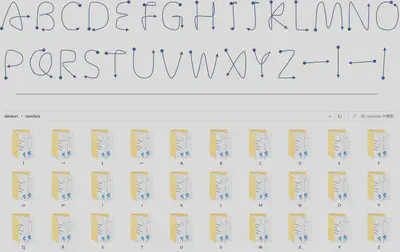
Dataset link: https://pan.baidu.com/s/1zwzfdnttbouxvKiKfAV6pg?pwd=zjvx code:zjvx
Visualization
In traditional network training and signal processing, writing and debugging code can be a complex and time-consuming task. However, through our platform, you can accomplish these tasks using an intuitive graphical interface, without the need for an in-depth understanding of programming details. This makes it easy even for researchers to engage in network training and signal processing, saving a significant amount of time and effort. Moreover, our platform offers rich visualization capabilities to help you comprehend and analyze your data as well as your model’s performance. These visualization tools provide you with deeper insights, assisting you in making more informed decisions.

Interference of the Body with Signals
Even when the human body is not directly in the line of sight (LOS) of the radar, approaching the radar can still result in receiving signals from the human body (possibly from the main beam, sidelobes, multipath, etc.), which could potentially interfere with gesture signals. To validate this impact, we conducted the following experiments. As shown in the figure, when a person stands in front of the radar without applying static clutter removal, the human target is clearly visible in the radar heatmap. When static clutter removal is applied, even slight body movements (of very small amplitude) can lead to noticeable target motion in the radar heatmap. This phenomenon becomes even more pronounced with larger-scale movements.(Corresponding to Fig. 25)
 |
 |
 |
 |
We dynamically demonstrate the processing of an aerial handwritten trajectory ‘B’ obtained from radar signals. When performing only basic preprocessing, interference cannot be removed. Our method robustly achieves the reconstruction of the trajectory. (Corresponding to Fig. 27)


Independent GPR vs Joint GPR
(Corresponding to Fig. 29)
Dynamically demonstrated two GPR prediction methods.
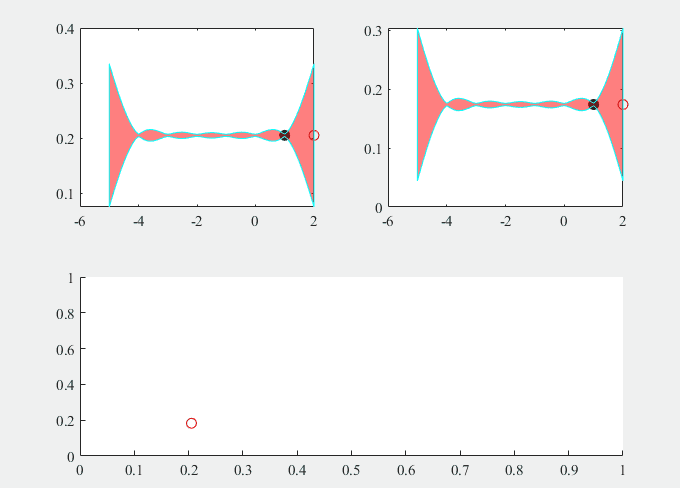 |
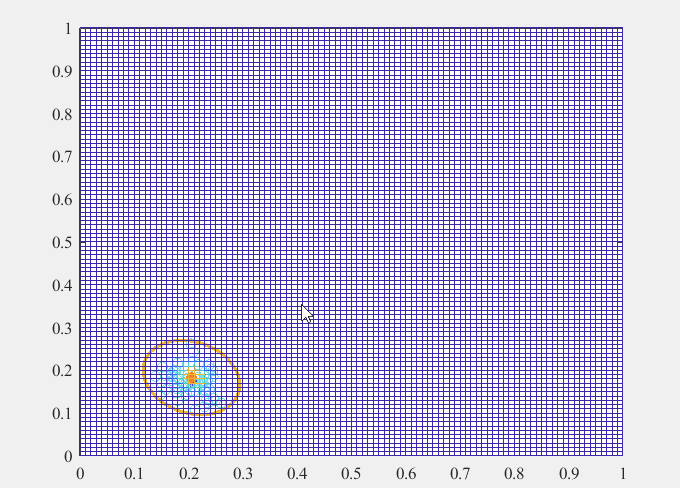 |
Comparing the processing of [14] with our processing.
(Corresponding to Fig. 30)
![Comparing the processing (a) of [14] with our processing (b), the example of in-air handwriting the letter M.](/project/mmhtsr/img/12_1.gif)
Imitating the Hand Tremors in Elderly Gesture Movements
Application
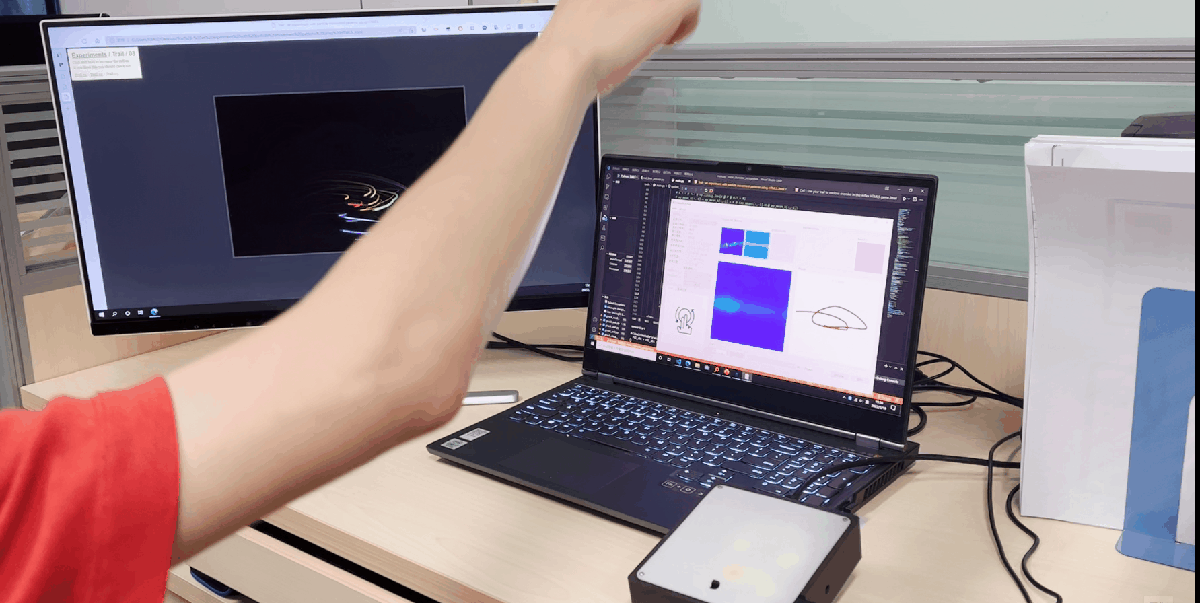 |
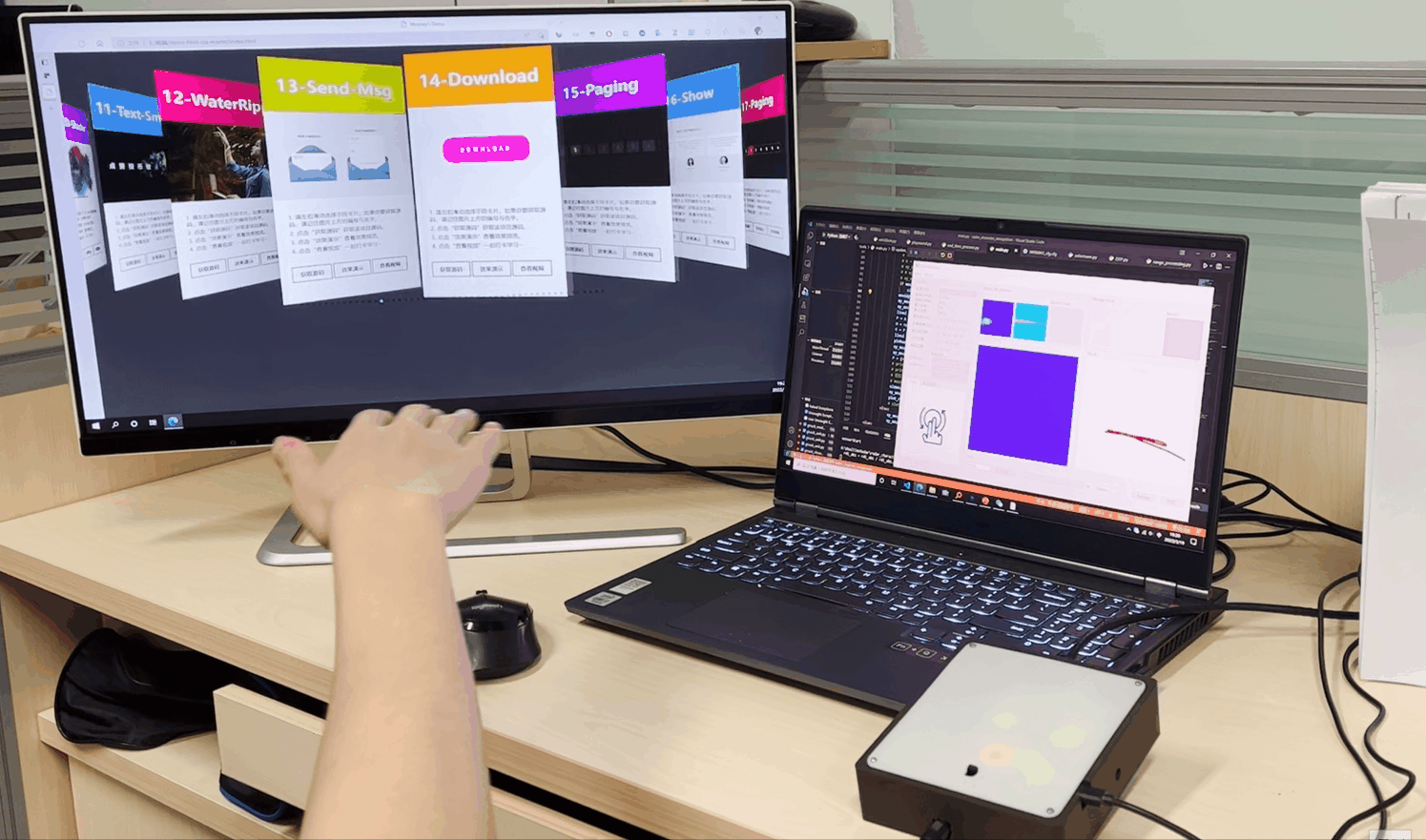 |
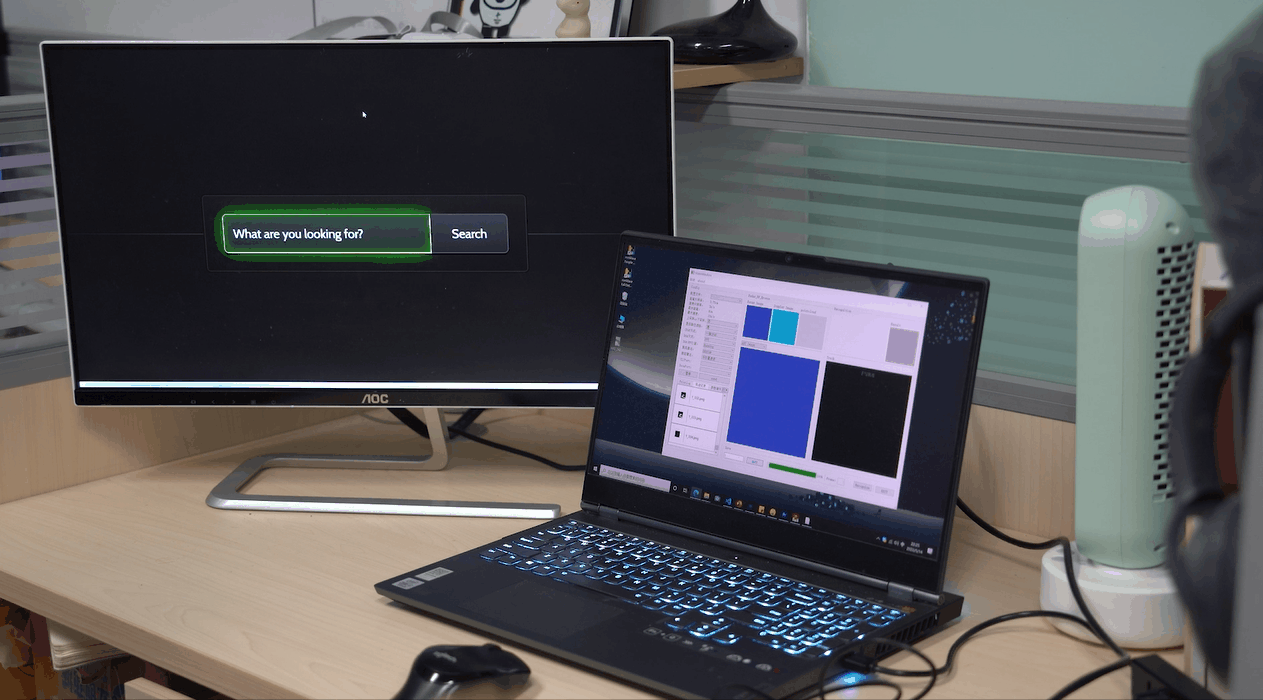 |